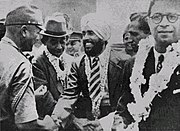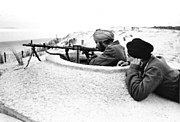Indian independence movement
| Colonial India | ||||||||||||||
|---|---|---|---|---|---|---|---|---|---|---|---|---|---|---|
 | ||||||||||||||
|
||||||||||||||
|
||||||||||||||
|
||||||||||||||
| Part of a series on |
| Political revolution |
|---|
 |
|
|
The Indian Revolution, also known as Indian Independence Movement, was a series of historic events with the ultimate aim of ending British rule in India also known as British Raj. It lasted until 1947.
The first nationalistic
The stages of the independence struggle in the 1920s were characterized by the leadership of
Few leaders followed a more violent approach, which became especially popular after the Rowlatt Act, which permitted indefinite detention. The Act sparked protests across India, especially in the Punjab province, where they were violently suppressed in the Jallianwala Bagh massacre.
The Indian independence movement was in constant ideological evolution. Essentially
.India remained a Crown Dominion until 26 January 1950, when the Constitution of India established the Republic of India. Pakistan remained a dominion until 1956 when it adopted its first constitution. In 1971, East Pakistan declared its own independence as Bangladesh.[1]
Background
Early British Colonialism in India
The first European to reach India via the Atlantic Ocean was the Portuguese explorer
Over the next two centuries, the British
After the defeat of
-
Robert Clive withNawab Siraj-ud-Daulah of Bengal in Plassey made the battle one of the main factors of British supremacyin the sub-continent.
-
The Last Effort and Fall of Tipu Sultan by Henry Singleton, c. 1800. After the defeat of Tipu Sultan of Mysore, most of South India was now either under the company's direct rule, or under its indirect political control.
Early rebellions
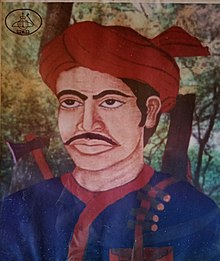
In

The

The toughest resistance the Company experienced was offered by Mysore. The
In 1766 the Nizam of Hyderabad transferred the Northern Circars to the British authority. The independent king Jagannatha Gajapati Narayan Deo II of Paralakhemundi estate situated in today's Odisha and in the northernmost region of the then political division was continuously revolting against the French occupants since 1753 as per the Nizam's earlier handover of his estate to them on similar grounds. Narayan Deo II fought the British at Jelmur fort on 4 April 1768 and was defeated due to superior firepower of the British. He fled to the tribal hinterlands of his estate and continued his efforts against the British until his natural death on the Fifth of December 1771.

In 1804 the King of
-
Statue of Bakshi Jagabandhu, the leader of Paika Rebellion
-
Sidhu and Kanhu Murmu, leaders of Santhal rebellion
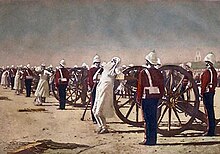
Rebellion of 1857
The Indian rebellion of 1857 was a large uprising in northern and central India against the East India Company.[37] The conditions of service in the company's army and cantonments had increasingly come into conflict with the religious beliefs and prejudices of the sepoys.[38] The predominance of members from the upper castes in the army, perceived loss of caste due to overseas deployment, and rumours of secret designs of the government to convert them to Christianity led to growing discontent.[39] The sepoys were also disillusioned by their low salaries and the racial discrimination practised by British officers in matters of promotion and privileges.[40]
The indifference of the British towards native Indian rulers and the annexation of
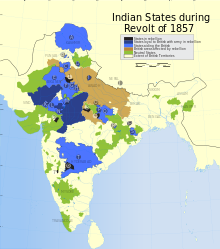
The final spark was provided by the rumoured use of tallow (from cows) and lard (pig fat) in the newly introduced Pattern 1853 Enfield rifle cartridges. Soldiers had to bite the cartridges with their teeth before loading them into their rifles, ingesting the fat. This was sacrilegious to both Hindus and Muslims.[41]
On 10 May 1857, the sepoys at
Revolts broke out in other parts of

The Indian Rebellion of 1857 was a turning point. While affirming the military and political power of the British,[46] it led to a significant change in how India was to be controlled by them. Under the Government of India Act 1858, the East India Company's territory was transferred to the British government.[47] At the apex of the new system was a Cabinet minister, the Secretary of State for India, who was to be formally advised by a statutory council;[48] the Governor-General of India (Viceroy) was made responsible to him, while he in turn was responsible to the government.
In a
In 1876 the British Prime Minister
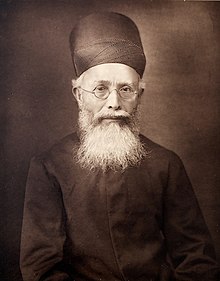
Rise of organized movements
The decades following the Rebellion were a period of growing political awareness, the manifestation of Indian public opinion and the emergence of Indian leadership at both national and provincial levels.
The Indian textile industry also played an important role in the freedom struggle of India. The merchandise of the textile industry pioneered the Industrial Revolution in India and soon England was producing cotton cloth in such great quantities that the domestic market was saturated, and the products had to be sold in foreign markets.
On the other hand, India was rich in cotton production and was in a position to supply British mills with the raw material they required. This was the time when India was under British rule and the East India Company had already established its roots in India. Raw materials were exported to England at very low rates while cotton cloth of refined quality was imported to India and sold at very high prices. This was draining India's economy, causing the textile industry of India to suffer greatly. This led to great resentment among cotton cultivators and traders.
After Lord Curzon announced the partition of Bengal in 1905, there was massive opposition from the people of Bengal. Initially, the partition plan was opposed through press campaign. The total follower of such techniques led to the boycott of British goods and the people of India pledged to use only swadeshi or Indian goods and to wear only Indian cloth. Imported garments were viewed with hate. At many places, public burnings of foreign cloth were organized. Shops selling foreign cloths were closed. The cotton textile industry is rightly described as the Swadeshi industry. The period witnessed the growth of swadeshi
According to Surendranath Banerji, the Swadeshi movement changed the entire texture of Indian social and domestic life. The songs composed by Rabindranath Tagore, Rajanikanta Sen and Syed Abu Mohd became the moving spirit for the nationalists. The movement soon spread to the rest of the country and the partition of Bengal had to be firmly inhaled on the first of April, 1912.

Rise of Indian nationalism
By 1900, although the Congress had emerged as an all-India political organisation, it did not have the support of most Indian Muslims.
The Hindu faction of the Independence movement was led by Nationalist leader

Nationalistic sentiments among Congress members led to a push to be represented in the bodies of government, as well as to have a say in the legislation and administration of India. Congressmen saw themselves as loyalists, but wanted an active role in governing their own country, albeit as part of the Empire. This trend was personified by Dadabhai Naoroji, who went as far as contesting, successfully, an election to the House of Commons of the United Kingdom, becoming its first Indian member.
Dadabhai Naoroji was the first Indian nationalist to embrace Swaraj as the destiny of the nation.[55] Bal Gangadhar Tilak deeply opposed a British education system that ignored and defamed India's culture, history, and values. He resented the denial of freedom of expression for nationalists, and the lack of any voice or role for ordinary Indians in the affairs of their nation. For these reasons, he considered Swaraj as the natural and only solution. His popular sentence "Swaraj is my birthright, and I shall have it" became the source of inspiration for Indians.

In 1907, Congress was split into two factions: The radicals, led by
But with Tilak's arrest, all hopes for an Indian offensive were stalled. The Indian National Congress lost credibility with the people. A Muslim deputation met with the Viceroy, Minto (1905–10), seeking concessions from the impending constitutional reforms, including special considerations in government service and electorates. The British recognised some of the Muslim League's petitions by increasing the number of elective offices reserved for Muslims in the Indian Councils Act 1909
The
In colonial India, the
The temperance movement in India became aligned with Indian nationalism under the direction of Mahatma Gandhi, who saw alcohol as a foreign importation to the culture of the subcontinent.[62][63]

Movements
Partition of Bengal, 1905
In July 1905,
The Partition also precipitated increasing activity from the then still Nascent militant nationalist
The British newspaper, The Empire, wrote:[66]
Khudiram Bose was executed this morning;... it is alleged that he mounted the scaffold with his body erect. He was cheerful and smiling.
-
Prafulla Chaki was associated with the Jugantar. He carried out assassinations against British colonial officials in an attempt to secure Indian independence.
-
Indo-German Conspiracy.
Jugantar
-
Aurobindo Ghose was one of the founding member of Jugantar, as well as being involved with nationalist politics in the Indian National Congress and the nascent revolutionary movement in Bengal with the Anushilan Samiti.
-
Barindra Kumar Ghosh, was one of the founding members of Jugantar and younger brother of Sri Aurobindo.
-
Jugantar Partythat was the central association of revolutionary Indian independence fighters in Bengal.
Some senior members of the group were sent abroad for political and military training. One of them,
Bagha Jatin was one of the senior leaders in Jugantar. He was arrested, along with several other leaders, in connection with the Howrah-Sibpur Conspiracy case. They were tried for treason, the charge being that they had incited various regiments of the army against the ruler.[67]
Alipore bomb conspiracy case
Several leaders of the
-
The trial room, Alipore Sessions Court, Calcutta, depiction from 1997.
-
Muraripukur garden house, in the Manicktolla suburbs of Calcutta. This served as the headquarters of Barindra Kumar Ghosh and his associates.
-
Hare Krishna Konar, was connected with Civil disobedience and Calcutta arms act case and was deported to Cellular Jail. There he founded Communist Consolidation.
-
A wing of the Cellular Jail, Port Blair; showing the central tower where many revolutionaries for Indian independence were held imprisoned.
Communist Consolidation
Several leaders of Jugantar group were imprisoned in various jails, one of which was a prominent jail of
Delhi-Lahore conspiracy case

The
The investigations in the aftermath of the assassination attempt led to the Delhi Conspiracy trial.
-
Delhi-Lahore Conspiracy.[1]
-
United Provinces.
Howrah gang case
Most of the eminent
All India Muslim League
The All-India Muslim League was founded by the All India Muhammadan Educational Conference at Dacca (now Dhaka, Bangladesh), in 1906. Being a political party to secure the interests of the Muslim in British India, the Muslim League played a decisive role behind the creation of Pakistan in the Indian subcontinent.[76]
In 1916,
First World War
-
Indian cavalry on the Western Front during World War I.
-
Indian Army gunners (probably 39th Battery) with3.7-inch mountain howitzers, Jerusalem 1917.
-
Rash Behari Bose, was one of the key organisers of the Ghadar Mutiny and later the Indian National Army.
-
Punjabi Sikhs aboard the SS Komagata Maru in Vancouver's Burrard Inlet, 1914. Most of the passengers were not allowed to land in Canada and the ship was forced to return to India. The events surrounding the Komagata Maru incident served as a catalyst for the Ghadarite cause.
The initial response throughout India to Lord Hardinge’s announcement was, for the most part, enthusiastic support. Indian princes volunteered their men, money, and personal service. Support from the Congress Party was primarily offered on the hopes that Britain would repay such loyal assistance with substantial political concessions—if not immediate independence or at least dominion status following the war, then surely its promise soon after the Allies achieved victory. Contrary to initial British fears of an Indian revolt, Indians contributed considerably to the British war effort by providing men and resources. About 1.3 million Indian soldiers and labourers served in Europe, Africa, and the Middle East, while both the Indian government and the princes sent large supplies of food, money, and ammunition. Nonetheless, Bengal and
None of the revolutionary conspiracies made a significant impact inside India. The prospect that subversive violence would have an effect on a popular war effort drew support from the Indian population for special measures against anti-colonial activities in the form of
Hindu–German Conspiracy
The
Other related events include the
Ghadar Mutiny
The
Intelligence about the threat of the mutiny led to a number of important war-time measures introduced in India, including the passages of

1st Christmas Day and 2nd Christmas Day plot
The first
The second Christmas Day plot was to initiate an insurrection in
Niedermayer–Hentig Expedition
The
Britain saw the expedition as a serious threat. Britain and its ally, the
The mission failed in its main task of rallying Afghanistan, under Emir
Nationalist response to war
In the aftermath of the First World War, high casualty rates, soaring inflation compounded by heavy taxation, a widespread influenza pandemic and the disruption of trade during the war escalated human suffering in India.
The pre-war nationalist movement revived moderate and extremist groups within the Congress submerged their differences in order to stand together as a unified front. They argued that their enormous services to the British Empire during the war demanded a reward to demonstrate Indian capacity for self-rule. In 1916, Congress succeeded in forging the Lucknow Pact, a temporary alliance with the All India Muslim League over the issues of devolution and the future of Islam in the region.[87]
British reforms
The British themselves adopted a "carrot and stick" approach in recognition of India's support during the war and in response to renewed nationalist demands. In August 1917,

Gandhi arrives in India

Gandhi had been a leader of the Indian nationalist movement in
Gandhi returned to India on 9 January 1915, and initially entered the political fray not with calls for a nation-state, but in support of the unified commerce-oriented territory that the Congress Party had been asking for. Gandhi believed that the industrial development and educational development that the Europeans had brought were long required to alleviate many of India's chronic problems.
The positive impact of reform was seriously undermined in 1919 by the

The agitation unleashed by the acts led to demonstrations and British repressions, culminating on 13 April 1919, in the Jallianwala Bagh massacre (also known as the Amritsar Massacre) in Amritsar, Punjab. In response to agitation in Amritsar, Brigadier-General Reginald Dyer blocked the main, and only entrance, and ordered troops under his command to fire into an unarmed and unsuspecting crowd of some 15,000 men, women, and children. They had assembled peacefully at Jallianwala Bagh, a walled courtyard, but Dyer had wanted to execute the imposed ban on all meetings and proposed to teach all protestors a lesson the harsher way.[92] A total of 1,651 rounds were fired, killing 379 people (as according to an official British commission; Indian officials' estimates ranged as high as 1,499 and wounding 1,137 in the massacre.)[93] Dyer was forced to retire but was hailed as a hero by some in Britain, demonstrating to Indian nationalists that the Empire was beholden to public opinion in Britain, but not in India.[94] The episode dissolved wartime hopes of home rule and goodwill and opened a rift that could not be bridged short of complete self-rule.[95]
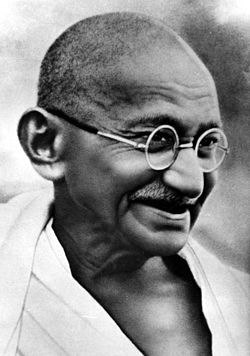
First non-co-operation movement
From 1920 to 1922, Gandhi started the Non-Cooperation Movement. At the Kolkata session of the Congress in September 1920, Gandhi convinced other leaders of the need to start a non-co-operation movement in support of
Membership in the party was opened to anyone prepared to pay a token fee, a hierarchy of committees was established, made responsible for discipline and control over a hitherto amorphous and diffuse movement. The party was transformed from an elite organisation to one of mass national appeal and participation.
Gandhi was sentenced in 1922 to six years in prison, but was released after serving two. On his release from prison, he set up the
The Indian political spectrum was further broadened in the mid-1920s by the emergence of both moderate and militant parties, such as the
Result of movements by Gandhi
The mass movements sparked nationalist sentiment with the Indian populace and figures like Mahatma Gandhi united a nation behind his non-violence movement; philosophy and undoubtedly put crucial pressure on the British occupation. The movements failed in their primary objective, achieving independence for India, as they were often called off before they naturally concluded due to laws and punishment. While in the later years of the Raj economic factors like the reversing trade fortunes between Britain and India and the cost of fielding the Indian armed forces abroad lumped on the British taxpayer by the 1935 Government of India act, had mounting implications for British administration, united resistance further drew light on the growing disparity of the British failures to achieve solidarity over India.
On 14 July 1942 the
The British swiftly responded to the Quit India Movement with mass arrests. Over 100,000 arrests were made, massive fines were levied, and demonstrators were subjected to public flogging. Hundreds of civilians were killed in violence many shot by the police army. Tens of thousands of leaders were also arrested and imprisoned until 1945. Ultimately, the British government realised that India was ungovernable in the long run, and the question for the postwar era became how to exit gracefully and peacefully.[98][99]
Purna Swaraj
-
Civil disobedience movement.
-
V. K. Krishna Menon in 1928 founded India League in London and demanded total independence from the British rule.
-
Jawaharlal Nehru in 1929 demanded "complete independence from Great Britain."
-
Vallabhbhai Patel was appointed as the 49th President of Indian National Congress, organising the party for elections in 1934 and 1937 while promoting the Quit India Movement.
Congress leader and famous poet Hasrat Mohani and Communist Party of India leader Swami Kumaranand had demanded complete independence (Purna Swaraj) from the British in 1921 and put the resolution during an All-India Congress Forum at the Ahmedabad Session of AICC.[100] Maghfoor Ahmad Ajazi supported the 'Purna Swaraj' motion demanded by Hasrat Mohani.[101]
In 1928, India League was established by V. K. Krishna Menon in London to demand total independence from the British rule.[102][103] This organisation has been described as "the principal organisation promoting Indian nationalism in pre-war Britain".[104]
Following the rejection of the Simon Commission's rejections, an all-party conference was held at Mumbai in May 1928 to instill a sense of camaraderie. The conference appointed a committee under Motilal Nehru to create a constitution for India. The Kolkata session of the Indian National Congress asked the British government to accord India dominion status by December 1929, or face a countrywide civil disobedience movement.
Amid rising discontent and increasingly violent regional movements, a call for complete sovereignty and an end to British rule found greater support from the people. At the
The Gandhi–Irwin Pact was signed in March 1931, and the government agreed to release political prisoners. Mahatma Gandhi managed to have over 90,000 political prisoners released under this pact.[105] Though his appeal to terminate the death sentences of Bhagat Singh, Sukhdev Thapar and Shivaram Rajguru was not accepted by the British. For the next few years, Congress and the government negotiated until the Government of India Act 1935

Elections and the Lahore resolution
The

In 1939, the Viceroy
In
The All-India Muslim League worked to try to silence those Muslims who stood against the partition of India, often using "intimidation and coercion".
Revolutionary movement
- - London Times, 29 January 1928
- -
Apart from a few stray incidents, armed rebellions against the British rulers did not occur before the beginning of the 20th century. The Indian revolutionary underground began gathering momentum through the first decade of the 20th century, with groups arising in
In Bengal, the
Indian nationalism made headway through Indian societies as far as Paris and London. In London
-
Shyamji Krishna Varma, who founded the Indian Home Rule Society, India House and The Indian Sociologist in London.
-
V. V. S. Aiyar subscribed to the militant form of resistance against the British.
-
Pandurang Mahadev Bapat, acquired the title of Senapati, meaning commander, as a consequence of his leadership during the Mulshi Satyagraha.[119]
-
Chandra Shekhar Azad reorganised the Hindustan Republican Association under its new name of Hindustan Socialist Republican Army (HSRA) after the death of its founder, Ram Prasad Bismil.
The activities of nationalists abroad is believed to have shaken the loyalty of a number of native regiments of the
However, the emergence of the Gandhian movement slowly began to absorb the different revolutionary groups. The Bengal Samiti moved away from its philosophy of violence in the 1920s, when a number of its members identified closely with the
The HSRA had strong influences from leftist ideologies.
Within a short time of its inception, these organisations became the focus of an extensive police and intelligence operations. Operations against
In the 1920s,
The Kallara-Pangode Struggle was one of some 39 agitations against the Government of India. The Home department has later notified about 38 movements/struggles across Indian territories as the ones that culminated in self-rule ended the British Raj.
-
Lahore jail after a 63-day hunger strike.
-
Ghadar Partyin the United States.
-
Surya Sen, best known for leading the 1930 Chittagong armoury raid.
-
Bhikaiji Cama, raised "Flag of Indian Independence" in Stuttgart, Germany.
Vanchinathan, in a letter found in his pocket, stated the following:
I dedicate my life as a small contribution to my motherland. I am alone responsible for this.
The
Sanatana Dharma of the Hindus and destroy them. Every Indian is trying to drive out the English and get swarajyam and restore Sanatana Dharma. Our Raman, Sivaji, Krishnan, Guru Govindan, Arjuna ruled our land protecting all dharmas, but in this land, they are making arrangements to crown George V, a mlecha, and one who eats the flesh of cows.
Three thousand Madrasees have taken a vow to kill George V as soon as he lands in our country. In order to make others know our intention, I who am the least in the company, have done this deed this day. This is what everyone in Hindustan should consider it as his duty.
I will kill Ashe, whose arrival here is to celebrate the crowning of cow-eater King George V in this glorious land which was once ruled by great Samrats. This I do to make them understand the fate of those who cherish the thought of enslaving this sacred land. I, as the least of them, wish to warn George by killing Ashe.
Vande Mataram. Vande Mataram. Vande Mataram
Final process of Indian self-rule movement
-
Ram Prasad Bismil Udyan (British imperialism.
-
Rajendra Lahiri was the mastermind behind Kakori conspiracy and Dakshineshwar bombing.
-
Pandit Ram Prasad Bismil, Ashfaqulla Khan and Rajendra Lahiri.
-
River Ravi.
In 1937,
When the Second World War started, Viceroy Linlithgow unilaterally declared India a belligerent on the side of Britain, without consulting the elected Indian representatives. In opposition to Linlithgow's action, the entire Congress leadership resigned from the provincial and local governments. The Muslims and Sikhs, by contrast, strongly supported the war effort and gained enormous stature in London. Defying Congress, millions of Indians supported the war effort, and indeed the British Indian Army became the largest volunteer force, numbering 2,500,000 men during the war.[127]
-
National celebration at the founding of the Provisional National Indian government at the Free India Center, Berlin, withSecretary of State Wilhelm Kepplerspeaking, on 16 November 1943.
-
José P. Laurel, Subhas Chandra Bose.
-
Unreleased postage stampsof the Azad Hind government.
-
Lal Bahadur Shastri, was sent to prison for one year, for offering individual Satyagraha support to the independence movement.[128]
Especially during the
The self-rule movement included the
Quit India Movement
The Quit India Movement (also known as Bharat Chhodo Andolan) was a
During the movement, Gandhi and his followers continued to use non-violence against British rule. This movement was where Gandhi gave his famous message, "Do or Die!", and this message spread towards the Indian community. In addition, this movement was addressed directly to women as "disciplined soldiers of Indian freedom" and they had to keep the war for independence to go on (against British rule).

At the outbreak of war, the Congress Party had during the Wardha meeting of the working-committee in September 1939, passed a resolution conditionally supporting the fight against fascism,
The aim of the movement was to force the British Government to the negotiating table by holding the Allied war effort hostage. The call for determined but
On 8 August 1942, the Quit India resolution was passed at the Mumbai session of the All India Congress Committee (AICC). The draft proposed that if the British did not accede to the demands, a massive Civil Disobedience would be launched. However, it was an extremely controversial decision. At Gowalia Tank, Mumbai, Gandhi urged Indians to follow non-violent civil disobedience. Gandhi told the masses to act as citizens of a sovereign nation and not to follow the orders of the British. The British, already alarmed by the advance of the Japanese army to the India–Burma border, responded the next day by imprisoning Gandhi at the Aga Khan Palace in Pune. The Congress Party's Working Committee, or national leadership was arrested all together and imprisoned at the Ahmednagar Fort. They also banned the party altogether. All the major leaders of the INC were arrested and detained. As the masses were leaderless the protest took a violent turn. Large-scale protests and demonstrations were held all over the country. Workers remained absent en masse and strikes were called. The movement also saw widespread acts of sabotage, Indian under-ground organisation carried out bomb attacks on allied supply convoys, government buildings were set on fire, electricity lines were disconnected and transport and communication lines were severed. The disruptions were under control in a few weeks and had little impact on the war effort. The movement soon became a leaderless act of defiance, with a number of acts that deviated from Gandhi's principle of non-violence. In large parts of the country, the local underground organisations took over the movement.
All the other major parties rejected the Quit India plan, and most cooperated closely with the British, as did the princely states, the civil service, and the police. The Muslim League supported the Raj and grew rapidly in membership, and in influence with the British.[citation needed]
There was opposition to the Quit India Movement from several political quarters who were fighting for Indian self-rule. Hindu nationalist parties like the Hindu Mahasabha openly opposed the call and boycotted the Quit India Movement.[131] Vinayak Damodar Savarkar, the president of the Hindu Mahasabha at that time, even went to the extent of writing a letter titled "Stick to your Posts", in which he instructed Hindu Sabhaites who happened to be "members of municipalities, local bodies, legislatures or those serving in the army...to stick to their posts" across the country, and not to join the Quit India Movement at any cost.[131]
The other Hindu nationalist organisation, and Mahasabha affiliate
The Sangh has scrupulously kept itself within the law, and in particular, has refrained from taking part in the disturbances that broke out in August 1942.[132]
The British Government stated that the RSS was not at all supporting any civil disobedience against them, and as such their other political activities(even if objectionable) can be overlooked.[133] Further, the British Government also asserted that at Sangh meetings organised during the times of anti-British movements started and fought by the Indian National Congress,
Speakers urged the Sangh members to keep aloof from the congress movement and these instructions were generally observed.[133]
As such, the British government did not crackdown on the RSS and Hindu Mahasabha at all.
The RSS head (sarsanghchalak) during that time,
In 1942 also, there was a strong sentiment in the hearts of many. At that time too, the routine work of the Sangh continued. Sangh decided not to do anything directly. 'Sangh is the organisation of inactive people, their talks have no substance' was the opinion uttered not only by outsiders but also our own swayamsevaks.[134][135]
A number of violent incidents against British officials also took place during the Quit India movement around the country. The British arrested tens of thousands of leaders, keeping them imprisoned until 1945. Ultimately, the British government realised that India was ungovernable in the long run, and the question for the postwar era became how to exit gracefully and peacefully.
Others
-
MajorMohan Singh, leader of the First Indian National Army. Circa April 1942.
-
Sikh soldiers of the Indian Legion guarding the Atlantic Wall in France in March 1944.
India's entry into the war was strongly opposed by
The INA was to see action against the Allies, including the
While a number of Japanese officers, even those like Fujiwara, who were devoted to the Indian cause, observed Bose as a military incompetent as well as an unrealistic and stubborn man who sees only his own needs and problems and could not observe the larger picture of the war as the Japanese had to.[137]
The INA failed owing to disrupted logistics, poor supplies from the Japanese, and lack of training.[138] The Azad Hind Fauj surrendered unconditionally to the British in Singapore in 1945. In the consensus of scholarly opinion, Subhas Chandra Bose's death occurred from third-degree burns on 18 August 1945 after his overloaded Japanese plane crashed in Japanese-ruled Formosa (now Taiwan).
Trials against members of the INA began in late 1945, and included the infamous joint court-martial of key figures Shah Nawaz Khan and Prem Sahgal.
The
The agitations, mass strikes, demonstrations and consequently support for the mutineers, therefore continued several days even after the mutiny had been called off. Along with this, the assessment may be made that it described in crystal clear terms to the government that the
The mutiny ended with the surrender of revolting the sailors to British officials. Congress and the Muslim League had convinced Indian sailors to surrender. They condemned the mutiny due to the political and military risks of unrest.
Impact of World War II
World War II was one of the most significant factors in accelerating Indian independence, and the independence of many British and non-British colonies. In the period 1945–1965, decolonization led to more than three dozen countries getting freedom from their colonial powers.[141] Many factors contributed to the downfall of the British Empire.
When Britain reached out to the US asking for help in the war, the US offered help contingent on Britain decolonizing post-WWII, and that agreement was codified in the
Sovereignty and partition of India
On 3 June 1947, Viscount
Violent clashes between Hindus, Sikhs, and Muslims followed. Prime Minister
Following self-rule in 1947, India remained in the Commonwealth of Nations, and relations between the UK and India have since become friendly. There are many areas in which the two countries seek stronger ties for mutual benefit, and there are also strong cultural and social ties between the two nations. The UK has an ethnic Indian population of over 1.6 million. In 2010, Prime Minister David Cameron described Indian – British relations as a "New Special Relationship".[146]
See also
- Partition of India
- Partition of Bengal (1947)
- Independence Day (India)
- Independence Day (Pakistan)
- Revolutionary movement for Indian independence
- Women of the Indian independence movement
- Communist involvement in Indian Independence movement
Notes
- English colonial empire, including the territories and trading post in Asia, came under British control following the union of England and Scotland in 1707.
References
Citations
- ^ Zakaria, Anam. "Remembering the war of 1971 in East Pakistan". Al Jazeera. Retrieved 18 May 2020.
- ^ "Vasco da Gama reaches India". History.com. Retrieved 18 May 2020.
- ^ Heehs 1998, p. 9
- ^ Heehs 1998, pp. 9–10
- ^ Heehs 1998, pp. 11–12
- ^ "Sikh Wars | Indian history". Encyclopædia Britannica. Retrieved 18 May 2020.
- ^ "P Chidambaram releases documentary film on Alagumuthu Kone | Madurai News". The Times of India. Retrieved 1 October 2020.
- ^ a b c d Horo, Albert (2013). "Jharkhand Movement" (PDF). International Journal of Humanities and Social Science Invention. 2 (4): 1–6 – via Google Scholar.
- ^ ISBN 978-93-80607-10-8.
- ^ "Summary of the Tribal Rebellions during British rule in India". Jagranjosh.com. 20 March 2018. Retrieved 21 November 2021.
- JSTOR 43307694.
- ^ ISBN 978-81-250-4198-6.
- ^ Kumar, Akshay (18 June 2021). "Ho Rebellion & Kol Rebellion | Jharkhand". Edvnce. Retrieved 21 November 2021.
- ISBN 978-81-215-0353-2.
- ^ Khan, Muazzam Hussain. "Titu Mir". Banglapedia. Bangladesh Asiatic Society. Retrieved 4 March 2014.
- JSTOR 44145239.
- ^ This is our homeland... a collection of essays on the betrayal of Adivasi rights in India. Bangalore: Equations. 2007.
- ^ Soren, Nayan (30 June 2020). "Remembering Santal Hul : A quest for Indigenous sovereignty". Adivasi Resurgence. Retrieved 21 November 2021.
- ^ "The Forgotten Santhal Revolt of 1855". Live History India. Retrieved 21 November 2021.
- ^ "Remembering Santal Hul, a 19th Century Struggle Against Imperialism". The Wire. Retrieved 21 November 2021.
- ^ ISBN 978-81-7046-205-7.
- ^ ISBN 978-81-230-2544-5.
- ^ "About Birsa Munda [ 1875-1900 ] Biography & Life History". The Ambedkarite Today – Voice Of Voiceless. 15 November 2019. Retrieved 21 November 2021.
- ^ a b c "The 'Ulgulaan' of 'Dharti Aba – Birsa Munda'". Adivasi Resurgence. 9 June 2016. Retrieved 21 November 2021.
- ^ "East India Company – Definition, History, & Facts". Encyclopædia Britannica. 2023.
- ^ "Remembering Queen Velu Nachiyar of Sivagangai, the first queen to fight the British". The News Minute. 3 January 2017.
- ^ "Velu Nachiyar, Jhansi Rani of Tamil Nadu". The Times of India. 17 March 2016.
- ^ "Legends from South". Archived from the original on 4 September 2012.
- JSTOR 20203235.
- ISBN 978-93-5206-173-0.
- ^ "Chinnamalai, a lesser-known freedom fighter of Kongu soil". The Hindu. 2 August 2008. Archived from the original on 14 September 2008.
- ISBN 9789381115619.
- ^ Rout, Hemant Kumar (2012). "Villages fight over martyr's death place". The New Indian Express. Archived from the original on 6 May 2014. Retrieved 7 February 2013.
historians claim he is actually the first martyr in the country's freedom movement because none was killed by the Britishers before 1806
- ^ Mohanty, N.R. (August 2008). "The Oriya Paika Rebellion of 1817" (PDF). Orissa Review: 1–3. Archived from the original (PDF) on 11 November 2013. Retrieved 13 February 2013.
- ^ Paikaray, Braja (February–March 2008). "Khurda Paik Rebellion – The First Independence War of India" (PDF). Orissa Review: 45–50. Archived from the original (PDF) on 22 April 2014. Retrieved 13 February 2013.
- ^ "Paik Rebellion". Khordha. National Informatics Centre. Retrieved 14 August 2018.
- ^ a b Chandra et al. 1989, p. 31
- ^ Chandra et al. 1989, p. 33
- ^ Chandra et al. 1989, pp. 33–34
- ^ Chandra et al. 1989, p. 34
- ^ "The Uprising of 1857". Library of Congress. Retrieved 10 November 2009.
- ^ David 2002, p. 122
- ^ Chandra et al. 1989, p. 35
- ^ Chandra et al. 1989, pp. 38–39
- ^ Chandra et al. 1989, p. 39
- ^ Heehs 1998, p. 32
- ^ "Official, India". World Digital Library. 1890–1923. Retrieved 30 May 2013.
- ^ Heehs 1998, pp. 47–48
- ^ Heehs 1998, p. 48
- ISBN 9781442661042.
- ISBN 978-1-4008-7049-3
- ^ ISBN 978-0-521-00254-7Quote: "The first modern nationalist movement to arise in the non-European empire, and one that became an inspiration for many others, was the Indian Congress."
- ^ Chhabra, G.S. (1963). Social and Economic History of the Panjab: (1849–1901). S. Nagin. pp. 129–130, 346.
- ISBN 978-0-520-06041-8.
For the most part, however, Muslim India remained either aloof from or distrustful of the Congress and its demands.
- ^ "Swaraj | Indian politics | Britannica". www.britannica.com. Retrieved 11 March 2023.
- ISBN 978-0-520-26955-2.
- ISBN 9789810815394.
- ISBN 978-0-8386-1021-3.
- ISBN 978-0-8386-1021-3.
- ^ .
- ISBN 978-0-8386-1021-3.
- ISBN 9781576078334.
- ^ Fischer-Tiné & Tschurenev 2014, pp. 255–257
- ^ OCLC 254043308.
They [Khudiram Basu and Prafulla Chaki] threw a bomb on a coach similar to that of Kingsford's ... Khudiram ... was sentenced to death and hanged.
- ^ John R. McLane, "The Decision to Partition Bengal in 1905" Indian Economic and Social History Review, July 1965, 2#3, pp 221–237
- ^ Patel 2008, p. 56
- ^ The major charge... during the trial (1910–1911) was "conspiracy to wage war against the King-Emperor" and "tampering with the loyalty of the Indian soldiers" (mainly with the 10th Jats Regiment) (cf: Sedition Committee Report, 1918)
- ^ Basu, Raj Sekhar (2012). "Basu, Benoy Krishna". In Islam, Sirajul; Jamal, Ahmed A. (eds.). Banglapedia: National Encyclopedia of Bangladesh (Second ed.). Asiatic Society of Bangladesh.
- ^ Heehs 2008, p. 133
- ^ Majumdar, R. C. Penal Settlement in Andamans. Delhi: Government of India. p. 339.
- ^ Nandi, Soumitra (20 October 2017). "Story of Basanta Biswas, penned by Ujjal Biswas, to be portrayed on celluloid". www.millenniumpost.in. Retrieved 15 March 2022.
- ISBN 978-1-84331-765-4.
- ISBN 978-81-89738-31-0.
- ISBN 978-0-14-341678-4.
- ^ Samanta, Vol. II, "Nixon's Report", p. 591.
- ^ Jalal 1994, p. 4
- ^ Official website, Government of Pakistan. "The Statesman: Jinnah's differences with the Congress". Archived from the original on 27 January 2006. Retrieved 20 April 2006.
- ^ Gupta 1997, p. 12
- ^ Popplewell 1995, p. 201
- ^ Lawrence James, Raj: The Making and Unmaking of British India (2000) pp 439–518
- ^ a b Plowman 2003, p. 84
- ^ a b Hoover 1985, p. 252
- ^ a b Brown 1948, p. 300
- ^ Mukherjee 2010, p. 160
- ^ Majumdar 1975, p. 281
- ^ Hopkirk 1994, p. 179
- JSTOR 3021176
- ^ James, Raj: The Making and Unmaking of British India (2000) pp 459–60, 519–20
- ^ Denis Judd, Empire: The British Imperial Experience From 1765 To The Present (pp. 226—411, 998)
- ^ "The Indian Independence Movement". Retrieved 29 May 2014.
- ^ Jallianwala Bagh Massacre
- ^ Collett 2005, p. ix
- ^ Lloyd 2011, p. 181
- ^ Derek Sayer, "British Reaction to the Amritsar Massacre 1919–1920," Past & Present, May 1991, Issue 131, pp 130–164
- ^ Dennis Judd, "The Amritsar Massacre of 1919: Gandhi, the Raj and the Growth of Indian Nationalism, 1915–39," in Judd, Empire: The British Imperial Experience from 1765 to the Present (1996) pp 258- 72
- ^ Sankar Ghose, Gandhi (1991) p. 107
- ^ Sanjay Paswan and Pramanshi Jaideva, Encyclopaedia of Dalits in India (2003) p. 43
- ^ Zachariah, Benjamin (1 March 2011). "Zachariah, 'Gandhi, Non-Violence and Indian Independence'". History Review.
- ^ "Do or Die: The Quit India Movement of 1942". The Nonviolence Project. 19 August 2021. Retrieved 4 February 2024.
- ^ "Profile: Maulana Hasrat Mohani". The Milli Gazette (newspaper). 6 October 2012. Retrieved 11 March 2019.
- ^ Ministry of Culture, Government of India. "Maghfoor Ahmad Ajazi". amritmahotsav.nic.in.
- ISBN 978-81-7827-133-0.
- ISBN 978-1-000-72827-9.
- ISSN 0959-2296.
- ^ Banglapedia: National Encyclopedia of Bangladesh, Volume 3, p. 36, Sirajul Islam, Asiatic Society of Bangladesh
- JSTOR 3518012.
- ISBN 9781108621236.
- OCLC 136880.
This was also reflected in one of the resolutions of the Azad Muslim Conference, an organization which attempted to be representative of all the various nationalist Muslim parties and groups in India.
- ^ a b Ahmed, Ishtiaq (27 May 2016). "The dissenters". The Friday Times.
However, the book is a tribute to the role of one Muslim leader who steadfastly opposed the Partition of India: the Sindhi leader Allah Bakhsh Soomro. Allah Bakhsh belonged to a landed family. He founded the Sindh People's Party in 1934, which later came to be known as 'Ittehad' or 'Unity Party'. ...Allah Bakhsh was totally opposed to the Muslim League's demand for the creation of Pakistan through a division of India on a religious basis. Consequently, he established the Azad Muslim Conference. In its Delhi session held during April 27–30, 1940 some 1400 delegates took part. They belonged mainly to the lower castes and working class. The famous scholar of Indian Islam, Wilfred Cantwell Smith, feels that the delegates represented a 'majority of India's Muslims'. Among those who attended the conference were representatives of many Islamic theologians and women also took part in the deliberations ... Shamsul Islam argues that the All-India Muslim League at times used intimidation and coercion to silence any opposition among Muslims to its demand for Partition. He calls such tactics of the Muslim League as a 'Reign of Terror'. He gives examples from all over India including the NWFP where the Khudai Khidmatgars remain opposed to the Partition of India.
- ^ a b c Ali, Afsar (17 July 2017). "Partition of India and Patriotism of Indian Muslims". The Milli Gazette.
- ISBN 9788189833107.
- ^ a b Fraser 1977, p. 257
- ^ a b c Yadav 1992, p. 4
- ^ Hopkirk 1994, p. 46 [By 1909] India House was beginning to come under suspicion ... too late to save Sir William Curzon Wyllie from the assassin's pistol ... Savarkar could see that London was rapidly becoming too hot for him ... In early January 1910, therefore, he slipped quietly over to Paris, determined to make it his new revolutionary headquarters ... [police] managed to obtain evidence linking him with the smuggling of firearms into India.
- ^ Majumdar 1966, p. 147 Savarkar's Bande Mataram contained exhortations [advocating terrorism] ... This sort of propaganda produced a natural effect. A. M. T. Jackson, the Magistrate ... was shot dead on 21 December 1909 ... charges against him [Savarkar] included the sending of pistols and seditious pamphlets to India. Another charge was that in 1908 he with the help of residents in the India House manifolded in type a number of copies of a work describing minutely the manner of preparing explosives and bombs. He despatched these copies to various addresses in India.
- ^ Popplewell 1995, p. 135
- ISBN 978-81-7871-117-1.
- ISBN 978-0-7146-4580-3. Retrieved 25 March 2012.
- ISBN 9780520024076.
- ^ Lahiri 2000, p. 129
- . Retrieved 29 October 2015.
- ISBN 978-9-35150-543-3.
- ^ Khaksar Tehrik Ki Jiddo Juhad Volume 1. Author Khaksar Sher Zaman
- OCLC 802321049.
- ^ a b Balakrishna, V.G. "Freedom Movement in Andhra Pradesh". Government of India Press Information Bureau. Retrieved 28 March 2011.
- ISBN 9780857864475.
- .
- ^ "Lal Bahadur Shastri: In Prison Again". Free India. Archived from the original on 19 January 2007. Retrieved 13 March 2007.
- ^ "The Congress and The Freedom Movement". Indian National Congress. Archived from the original on 11 August 2007. Retrieved 24 September 2007.
- ^ Culture and Combat in the Colonies. The Indian Army in the Second World War. Tarak Barkawi. J Contemn History. 41(2), 325–355.pp:332
- ^ ISBN 978-0-415-67165-1.
- ISBN 978-81-250-2596-2.
- ^ a b Chandra 2008, p. 140
- ^ Puniyani 2005, pp. 134–
- ISBN 978-81-7495-236-3.
- ^ Bose 1985
- ISBN 0-231-07443-3.
- ^ "Forgotten armies of the East – Le Monde diplomatique – English edition". Mondediplo.com. 10 May 2005. Retrieved 14 June 2012.
- ^ Notes on India By Robert Bohm.pp213
- ^ James L. Raj; Making and unmaking of British India. Abacus. 1997. p571, p598 and; Unpublished, Public Relations Office, London. War Office. 208/819A 25C
- ^ "Milestones: 1945–1952 – Office of the Historian".
- ^ William Roger Louis, Imperialism at Bay: The United States and the Decolonization of the British Empire, 1941–1945 (1978).
- ^ Andrew N. Buchanan, "The War Crisis and the Decolonization of India, December 1941 – September 1942: A Political and Military Dilemma." Global War Studies 8#2 (2011): 5–31
- ^ "BBC – History – British History in depth: Britain, the Commonwealth and the End of Empire".
- ^ Mitra 1997, pp. 55–74
- ^ Nelson, Dean (7 July 2010). "Ministers to build a new 'special relationship' with India". The Daily Telegraph. Archived from the original on 21 July 2010.
Sources and further reading
- Amstutz, Andrew (27 May 2019). "Review essay: Alternative histories of revolutionaries in modern South Asia: context, chronology, and archives". India Review. 18 (3): 324–342. S2CID 199354334.
- JSTOR 41855198.
- Brown, Giles (August 1948). "The Hindu Conspiracy, 1914–1917". The Pacific Historical Review. 17 (3): 299–310. JSTOR 3634258.
- ISBN 978-0-14-010781-4.
- ISBN 978-81-241-1416-2.
- ISBN 978-1-85285-457-7.
- ISBN 978-0-670-91137-0.
- ISBN 978-1-317-91681-9.
- Fraser, Thomas G. (April 1977). "Germany and Indian Revolution, 1914-18". Journal of Contemporary History. 12 (2): 255–272. S2CID 161813088.
- Ghosh, Durba. Gentlemanly Terrorists: Political Violence and the Colonial State in India, 1919-1947 (Cambridge University Press, 2017.)
- Gupta, Amit Kumar (September–October 1997). "Defying Death: Nationalist Revolutionism in India, 1897–1938". Social Scientist. 25 (9/10): 3–27. JSTOR 3517678.
- ISBN 978-0-19-562798-5.
- ISBN 978-0-231-14098-0.
- Hoover, Karl (May 1985). "The Hindu Conspiracy in California, 1913–1918". German Studies Review. 8 (2): 245–261. JSTOR 1428642.
- ISBN 978-0-7195-5017-1.
- ISBN 978-0-521-45850-4.
- Lahiri, Shompa (2000). Indians in Britain: Anglo-Indian Encounters, Race and Identity, 1880–1930. Psychology Press. ISBN 978-0-7146-4986-3.
- ISBN 978-1-84885-723-0.
- Maclean, Kama. A Revolutionary History of Interwar India: Violence, Image, Voice and Text (Oxford University Press, 2015.)
- Majumdar, Bimanbehari (1966). Militant nationalism in India and its socio-religious background (1897–1917). General Printers & Publishers. OCLC 8793353.
- Majumdar, Ramesh C (1975). History of the Freedom Movement in India. Vol. II. Firma K. L. Mukhopadhyay. ISBN 978-81-7102-099-7.
- .
- Mukherjee, Prithwindra (2010). Les racines intellectuelles du mouvement d'indépendance de l'Inde (1893-1918). Editions Codex. ISBN 978-2-918783-02-2.
- Patel, Hitendra (2008). Khudiram Bose: Revolutionary Extraordinaire. New Delhi: Publications Division, Ministry of Information and Broadcasting, Govt. of India. ISBN 978-81-230-2278-9.
- Plowman, Matthew (Autumn 2003). "Irish Republicans and the Indo-German Conspiracy of World War I". New Hibernia Review. 7 (3): 81–105. S2CID 144632198.
- Popplewell, Richard James (1995). Intelligence and Imperial Defence: British Intelligence and the Defence of the Indian Empire, 1904-1924. London, England: Frank Cass. ISBN 978-0-7146-4580-3.
- ISBN 978-0-7619-3338-0.
Further reading
- ISBN 978-0-521-08353-9.
- ISBN 978-0-19-955201-6.
- Brown, Theodore (January 2008). "Spinning for India's Independence". Am J Public Health. 98 (1): 39. PMID 18048775.
- Gonsalves, Peter (2012). Khadi: Gandhi's Mega Symbol of Subversion. Sage Publications. ISBN 9788132107354.
- Gopal, Sarvepalli (1975). Jawaharlal Nehru: A Biography. Vol. One. Johnathan Cape. ISBN 978-0-224-01029-0.
- ISBN 978-0-8364-2376-1.
- ISBN 978-0-333-90425-1.
- Seal, Anil (2007) [First published 1968]. Emergence of Indian Nationalism: Competition and Collaboration in the Later Nineteenth Century. London, England: Cambridge University Press. ISBN 978-0-521-06274-9.
- ISBN 9788129113788.
- Sofri, Gianni (1995–1999). Gandhi and India: A Century in Focus. Janet Sethre Paxia (translator) (English edition translated from the Italian ed.). Gloucestershire: The Windrush Press. ISBN 978-1-900624-12-1.
- ISBN 978-0-19-503412-7.
- ISBN 978-0-19-513060-7.
Primary sources
- ISBN 978-0-8070-5909-8.
- Prasad, Bimal ed. Towards Freedom, 1945: Documents on the Movement for Independence in India (2008) online
- Yadav, B.D. (1992). M.P.T. Acharya: Reminiscences of an Indian Revolutionary. New Delhi: Anmol. ISBN 81-7041-470-9.
External links
 Quotations related to Indian independence movement at Wikiquote
Quotations related to Indian independence movement at Wikiquote



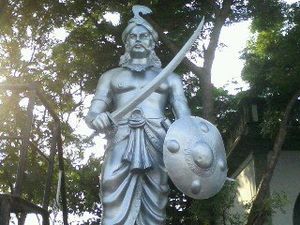

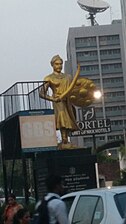
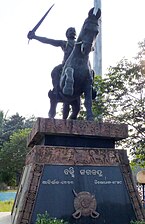
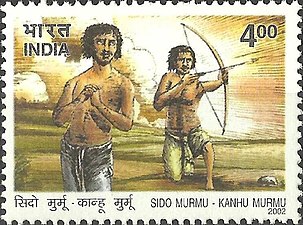
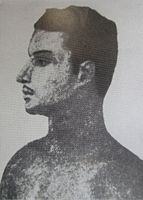


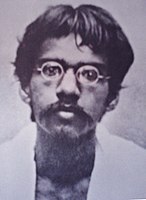
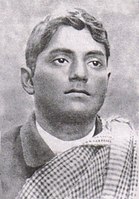
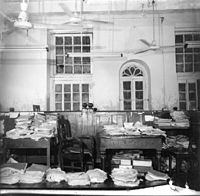



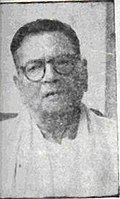


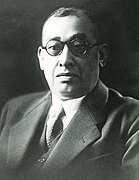







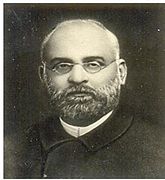
![Madan Lal Dhingra, while studying in England, assassinated William Hutt Curzon Wyllie,[117] a British official who was "old unrepentant foes of India who have fattened on the misery of the Indian peasant every [sic] since they began their career".[118]](http://upload.wikimedia.org/wikipedia/commons/thumb/e/e2/Dhingra.jpg/127px-Dhingra.jpg)
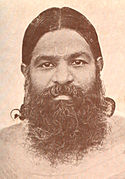
![Pandurang Mahadev Bapat, acquired the title of Senapati, meaning commander, as a consequence of his leadership during the Mulshi Satyagraha.[119]](http://upload.wikimedia.org/wikipedia/commons/thumb/c/c2/Statue_of_Senapati_Bapat_-_panoramio_%28cropped%29.jpg/143px-Statue_of_Senapati_Bapat_-_panoramio_%28cropped%29.jpg)
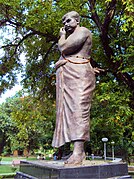
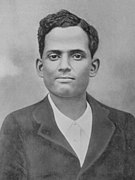


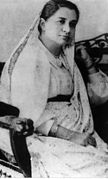
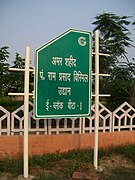

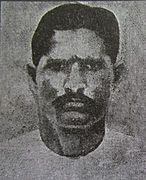
![Bhagwati Charan Vohra, died in Lahore[126] on 28 May 1930 while testing a bomb on the banks of the River Ravi.](http://upload.wikimedia.org/wikipedia/commons/thumb/9/90/Bhagwati_Charan_Vohra.jpg/140px-Bhagwati_Charan_Vohra.jpg)


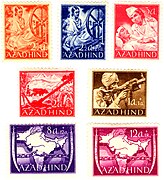
![Lal Bahadur Shastri, was sent to prison for one year, for offering individual Satyagraha support to the independence movement.[128]](http://upload.wikimedia.org/wikipedia/commons/thumb/4/45/Lal_Bahadur_Shastri_%28cropped%29.jpg/146px-Lal_Bahadur_Shastri_%28cropped%29.jpg)

